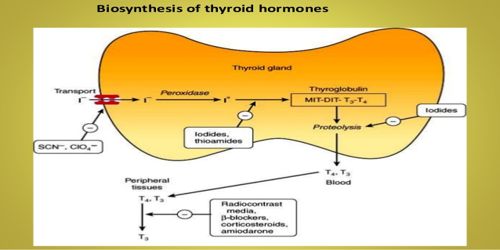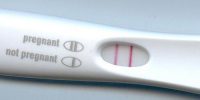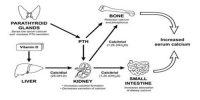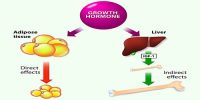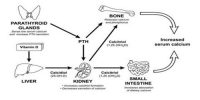Thyroid hormones are hormones produced by the thyroid gland that have roles in metabolism. Thyroid hormones are two hormones produced and released by the thyroid gland, namely triiodothyronine (T3) and thyroxine (T4). They act to increase the basal metabolic rate, affect protein synthesis, help regulate long bone growth and neural maturation, and increase the body’s sensitivity to catecholamines by permissiveness.
Biosynthesis of thyroid hormones
Biosynthesis occurs in follicular space. Cells surrounding the follicle, there are microvilli projecting into the colloid from the apexes, with the abundant endoplasmic reticulum.
(A) Iodide trapping: The basal membranes of thyroid cells have a specific ability to pump the iodine activity to the interior of the cells. This is called “iodide trapping mechanism or iodide pump.”
The iodide pump is a Na+-I– Symporter. The process involved in iodine trapping is secondary active transport.
Here the energy is provided by the transport of Na+ out of thyroid cells into interstitials by Na+-K+ ATPase
I– moves by diffusion along the iodine channel.
(B) Thyroglobulin: Thyroid cells synthesize large glycoprotein molecules called thyroglobulin and secrete then into follicle by subunits (by exocytosis),
- Subunits – 2,
- MW – 6,60,000.
Contain – 123 tyrosin molecules and 10% carbohydrate (by weight).
- Contains precursors of T3 & T4
- Large iodinated, glycosylated protein
- The molecular weight of 660k
- Carbohydrate: 8-10% of its weight
- Iodine: 0.2-1% of its weight, depending on the diet.
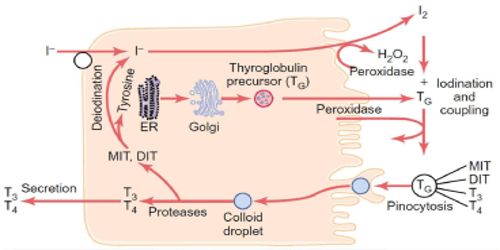
Fig: Biosynthesis of Thyroid Hormone
(C) Oxidation of iodide ion:
Only the thyroid tissue can oxidize the iodide ion (I–) to form iodine (nascent I/I3–). This oxidation occurs in the luminal surface of the follicular cells and is promoted by the enzyme thyroid peroxidase and its accompanying hydrogen peroxidase.
(D) Iodination of tyrosine: (Organification of thyroglobulin)
Oxidized iodide reacts with the tyrosine residues in thyroglobulin. Enzymes are responsible for this “iodine”.
Thus, MIT and then DIT are formed.
This reaction called organification occurs within seconds, called organification.
Iodide → Thyroperoxidase → H2O2 → Iodine.
(E) Coupling of iodotyrosine –
Iodotyrosine then couple to form thyroxine (T4) and triiodothyronine (T3). This reaction is also catalyzed by thyroperoxidase, by stimulating the free radical formation of iodotyrosine.
Example:
MIT + DIT = T3
DIT + DIT = T4
DIT + MIT = RT3 (Some)
Average distribution of iodinated compounds:
- MIT — 23%
- DIT — 33%
- T4 — 35%
- T3 — 7%
- RT3 — Small amount.
Two theories of coupling reaction occur:
(1) The coupling occurs with both DIT molecules attached to thyroglobulin. (Intra-molecular coupling)
(2) The DIT that forms the outer ring is first detached from thyroglobulin. (Intermolecular coupling)
Storage of thyroid hormone
The thyroid is unique among endocrine glands by virtue of its large store of hormone in the follicular colloid and the slow rate of turnover of its thyroglobulin bound T4 & T3. Each thyroglobulin molecule contains 1 to 3 thyroxine and an average of 1 triodothyronine molecule for every 14 molecules of thyroxine. In this form, thyroid hormones are stored in the follicles in an amount sufficient to supply the body with its normal requirements of thyroid hormone for 2 to 3 months.
